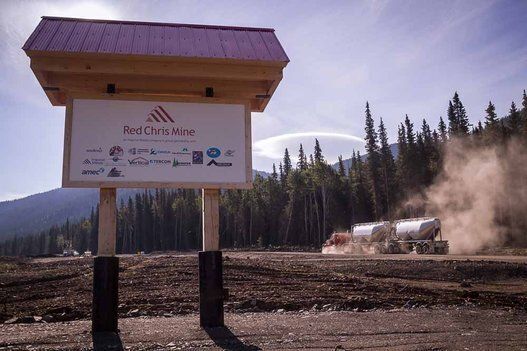
SCC to decide whether it will hear case that could influence future of environmental assessment law in Canada
The last time Ecojustice lawyers went to the Supreme Court of Canada to stand up for rigorous, comprehensive environment assessment law, we won. Now we're looking to repeat history.
We worked with lawyers from the Canadian Environmental Law Association (CELA) to file an application -- on behalf of Greenpeace Canada, Lake Ontario Waterkeeper, CELA and Northwatch -- to the Supreme Court of Canada, seeking leave to appeal a Federal Court of Appeal decision that sets a damaging precedent for the future of environmental assessment law in Canada.
Earlier this year, the Federal Court of Appeal set a damaging precedent in a ruling allowing regulators to avoid careful consideration of serious environmental and human health impacts associated with a plan to build new nuclear reactors at the Darlington site on Lake Ontario -- including the consequences of a major nuclear accident -- during the project's environmental assessment.
In essence, that ruling means that a "we'll figure it out later" attitude can replace a "look before we leap" approach during regulatory reviews of major industrial projects. This troubling shift away from the precautionary principle, a core tenet of environmental assessment law, sets a damaging precedent for future project reviews.
If allowed to stand, the decision will further constrain the ability of the Canadian Environmental Assessment Act (CEAA) -- one of the laws gutted and rewritten in the federal government's 2012 rollback of environmental safeguards -- to ensure that most serious environmental and human health impacts associated with major industrial projects, including mines, dams and tar sands operations, are addressed.
While it will likely be several months before we know if the Supreme Court of Canada will hear this appeal, the outcome could have implications for projects already reviewed under CEAA and currently before the courts, including Enbridge's Northern Gateway pipeline and B.C. Hydro's Site C mega-dam. It will also impact future environmental assessments carried out under that law.
Ecojustice has a long-established track record of advancing the case for rigorous, comprehensive environmental assessment law. Unfortunately, Canada's record is much weaker. As has too often been the case when it comes environmental protection in Canada, going to court has been the only way to secure the kind of safeguards Canadians expect our governments to deliver in defence of our health and the environment.
One of the first victories Ecojustice ever celebrated was also one of the most significant victories in the history of Canadian environmental law.
The seminal case centred around the question of whether an environmental assessment was required for a proposed mega-dam on Alberta's Oldman River. The federal government took the position that an assessment was unnecessary; we disagreed. Ecojustice lawyers, including our founding executive director Greg McDade, intervened before the Supreme Court of Canada in a case that ultimately established a sweeping precedent that required a federal environmental assessment for most major industrial projects across the country.
And when the federal government split the Red Chris Mine project into artificially small parts in order to evade a comprehensive environmental assessment and public consultation process, Ecojustice lawyers teamed up with MiningWatch Canada to take the matter all the way to the Supreme Court of Canada -- and won. The court held that the federal government must, by law, assess major industrial projects in their entirety.
A bleaker picture of environmental assessment law formed in 2012, when the federal government hammered through a slew of regressive changes to Canada's environmental laws. The Canadian Environment Assessment Act was, in effect, torn up and replaced with an entirely new version of the law -- under which thousands of projects that would have been subject to federal environmental assessment requirements under the old law, are not required to undergo a full review.
This tectonic shift in the comprehensiveness of Canada's environmental assessment regime, combined with some unfortunate CEAA case law setting a very low bar regarding the extent to which human health and environmental impacts need to be considered during project reviews, leaves Canadians vulnerable to unacceptable risk.
While we wait to hear if the Supreme Court will grant us leave to appeal, we are committed to continuing our efforts to ensure that the environmental impacts of other big industrial projects, such as Kinder Morgan's Trans Mountain pipeline expansion and the Roberts Bank Terminal 2, are carefully considered.
The election of a Liberal majority government led by Justin Trudeau also gives us reason for cautious optimism, as it has promised to launch a public review to restore credibility in Canada's eroded environmental assessment process. As the new government settles in, we'll be holding it to its promises.
Canadians understand the value of a precautionary approach. It's why we tell our loved ones to buckle up in the car and to wear a helmet while cycling. And when it comes to breaking ground on mines, dams, or tar sands operations, we must follow a similar mindset. At minimum, we must carefully consider how projects might impact the environment and our communities, and anticipate how to respond in the event of a major accident.
We must look before we leap. It is the responsible thing to do.
This piece was written by Ecojustice lawyers Kaitlyn Mitchell and Laura Bowman. As Canada's only national environmental law charity, Ecojustice is building the case for a better earth. Learn more by getting updates on the most pressing environmental issues delivered straight to your inbox
here.
MORE ON HUFFPOST:
